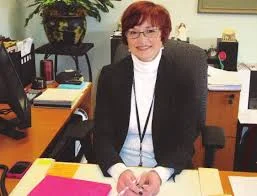The Wright Stuff
Wright’s office tower masterpiece, the S.C. Johnson headquarters in Racine.
In the planning stage of our summer vacation, my wife Shirley and I came to an agreement that we would visit several Frank Lloyd Wright buildings in the Midwest. I suggested we visit Wisconsin as neither of us had ever been there and the trip would encompass more than visiting Wright buildings. Wisconsin also appealed because it is noticeably cooler and less humid than the Delaware Valley this time of year.
Shirley found a website which promoted the Frank Lloyd Wright Trail: nine sites which were open to the public, all located in the southern part of the Wisconsin and easily accessible from Milwaukee. Perfect! This was the basis for our four-day itinerary.
On August 1 we landed in Milwaukee and proceeded directly to the first of two sites in Madison: Monona Terrace, a large civic building located on Lake Monona and adjacent to the state government district. Although designed in 1938, it was not built and opened until 1997. After a guided tour and lunch on a beautiful terrace overlooking the lake we proceeded to the Unitarian Meeting House. To our disappointment, the building was under renovation and much of it covered with scaffolding. Apparently the problem was a leaky roof (Wright fans will understand). However, we did manage to squeeze in a tour and were impressed by the number of visitors who attended. Afterwards, we proceeded west to Spring Green, the location of what many believe was Wright’s greatest building: Taliesin. This is where many of his ideas promoting organic architecture were fully realized. Interestingly, this site, and a number of other Wright buildings, had just been included as UNESCO World Heritage sites.
Day two included a two-hour Taliesin “highlights tour” which included the Hillside Studio & Theater building and the Taliesin home, plus a passing view of two additional structures. Afterwards, we had a wonderful “farm-to-table”’ lunch in a Wright-designed visitor center overlooking the Wisconsin River. We then had a quick visit to Wright’s grave located in a small family cemetery nearby. A small broken gravestone marks the location of his murdered mistress Mamah Borthwick Cheney. Afterwards we drove about ten minutes to a site where he donated the design and two acres in the honor of his mother Anna: The Wyoming Valley School. As we headed back east to Milwaukee, along the highway and in both directions were small square brown signs guiding us along the FLW Trail.
An American System-Built Home in Milwaukee.
In Milwaukee we visited six homes, side by side, built as prototypes for the American System-Built Homes. Small and affordable, yet elegant, these homes were meant to be built for moderate and low-income Americans. These were constructed in 1916. One is fully renovated, one under renovation, three others are also owned by the same preservation group (but with no renovation having taken place), and one is still in private hands: probably the only Wright house fully encased in aluminum siding! I thought this tiny site, hardly mentioned in any literature previously, would be hard-pressed to get any visitors. Wow, was I surprised. We arrived 30 minutes early and there were visitors there already. By the start of tour time another 20 has arrived and more were still coming. The people we spoke with admitted to being “Wright geeks.” My wife and I consider ourselves Wright fans, but not geeks. Well, maybe a little bit.
The last day of our trip we travelled to Racine, and lo and behold, there were at least 50 Wright geeks, many from around the world! We had all come to see one of his masterpieces and one of my favorites; the S.C. Johnson Company global headquarters. The site has a wonderful but quirky research tower and an office administration building. Wright stated the interior of the administration building “was designed to be an inspiring place to work in as any cathedral was designed to worship in.” This space has been referred to as the finest room in America by many architectural critics and historians.
From the Johnson site we travelled to the private home of H.F. Johnson, located about 20 minutes away. The home is the largest single-family residence designed by Wright: over 14,000 square feet. Along the way there is an early (1905) Wright home, the Thomas P. Hardy House, not open to the public and unmarked, but apparently considered one of Wright’s classics. Afterwards, we had lunch overlooking Lake Michigan and started planning our next Wright pilgrimage. As one of the other visitors we met earlier pointed out, “We have seen a handful here in southern Wisconsin, now only another 400 or so Wright buildings to visit.”





